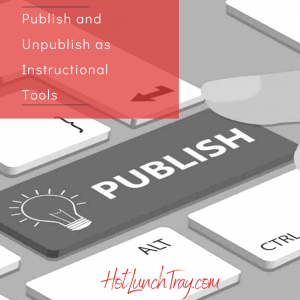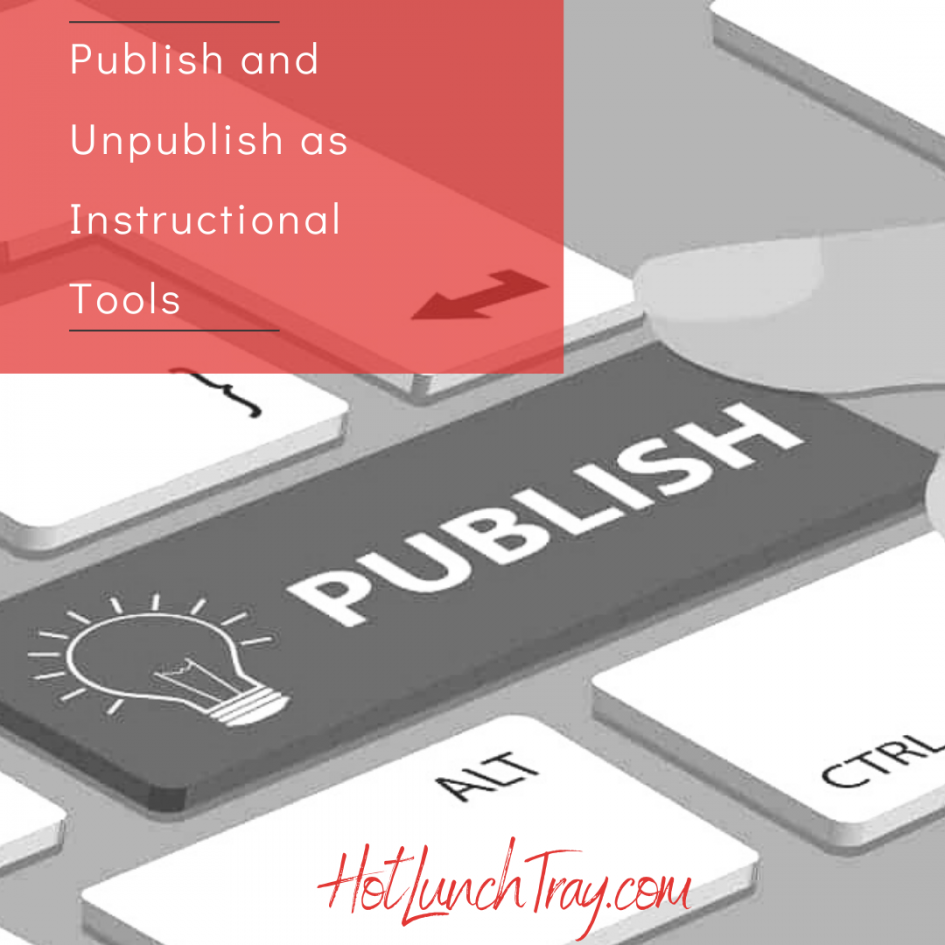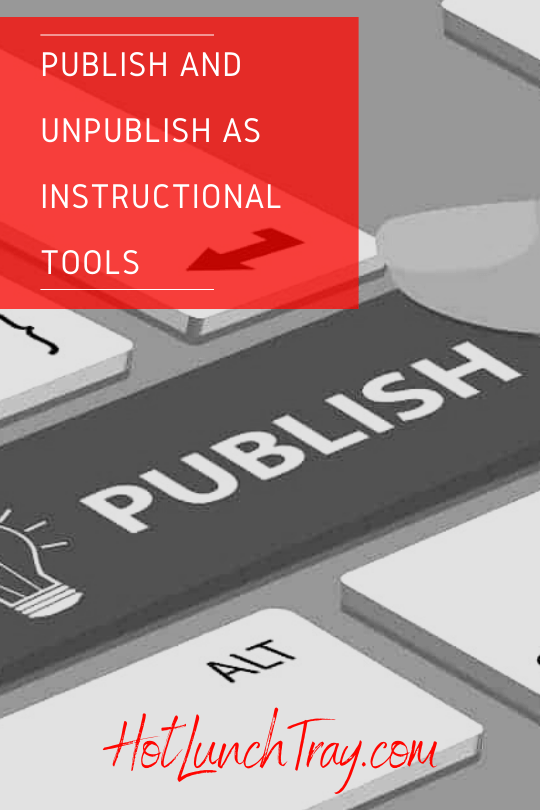If you have been in a classroom in the past 19 months (since March 2020) you already know about the power of the publish and unpublish as an instructional tool. And if not, I know don’t how you’ve been doing it friend, but you must be especially tired. Tired of making videos about posted directions about frequently asked questions from learners and family members – no wait, that’s all of us.
Publish and Unpublish as Instructional Tools
K-12 educators got through this far with endless grace, support, and sympathy from our community. But we rapidly learned something, learners can’t complete work they can’t access. And we learned not to Publish everything at once, or try to micromanage when each piece of work is done. We found a Goldilocks solution by using Publish and Unpublish as Instructional Tools.
Guide Student Interaction
Most learning management systems (LMSs) offer instructors the ability to Publish and Unpublish modules or folders and items within those organizing units {Read: How to Organize a Module}. Instructors can make select modules and select items within a module available by Publishing them.
Published modules and items are available for learners and families. Unpublished modules and items are hidden from learner and family view. The first decision instructors make is what to make visible and when to do so. A good strategy can guide students through the content.
As a rule of thumb, no more than three content modules should be viewable at any time. This does not mean the entire module has to be visible, or available for the students to access. The present content module, a small portion of the next module, and the prior modules.
Time-Based Instruction
Placement of modules within the course also signals recency to learners. The current modules should always be at the top of the student’s view. An instructor would rearrange a prior module to the end of the (student-visible) modules. Alternate options may include additional assignments with specific due dates for select students if they need more discretely formatted support.
Time-based instruction is a good strategy under which most students succeed. It is possible you may need to consider a parallel course with gating for students. There may be students who require more immediate reinforcement, there could also be students who need a more focused experience. For those students experiment with a separate copy of the course for them and manage through gating of modules and items as the instructor is able to do so. This should be a last resort; this is time-intensive for the instructor and should not be written into IEPs as not all instructors can manage this well.
 Allow Past and Future Access
Allow Past and Future Access
The total number of items in a module fluctuates, identify the median item in the current module as a potential decision point for your guidance through the course modules. A suggested strategy is to keep the prior module available only unit the median of the current module is reached. Alternatively, a hallway assessment or project would also be a good point to close the prior module. Make announcements from the beginning of the current modules when the prior module will close and continue to announce until it closes.
Consider Publishing a small amount of the next module, maybe just an overview, lesson, and students interaction/submission. Since you may not be offering direct support on the future module consider how gating might work and how challenging to insert it and then remove it when you transition to the future modules as the current module. As your current module nears completion start talking about the portion of the future module which is available to students to promote looking ahead and tying the current content to the future content for learners.







1 Pingback